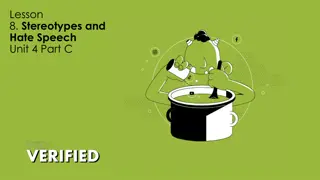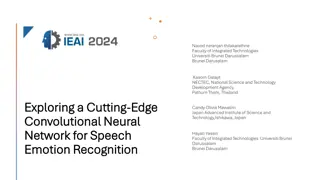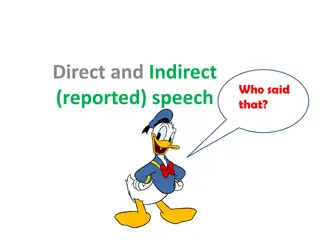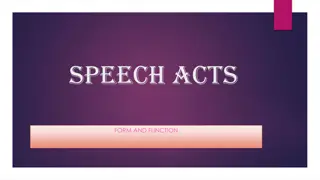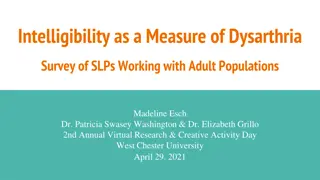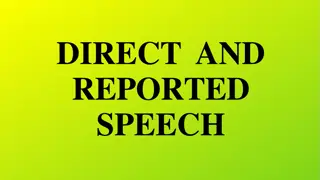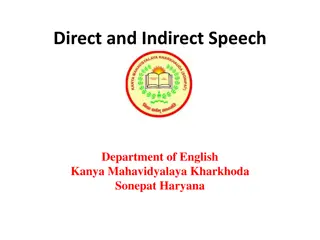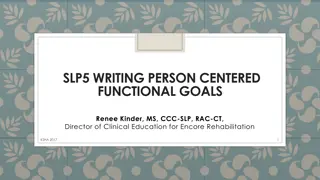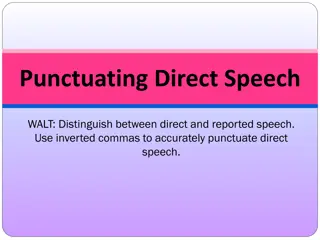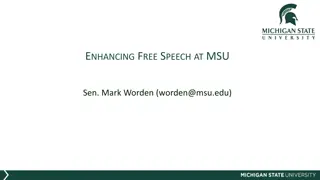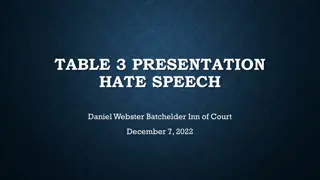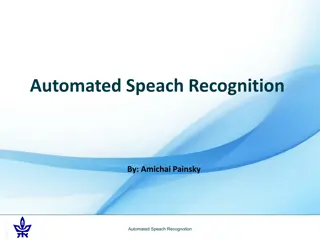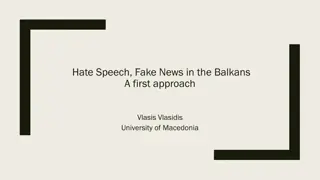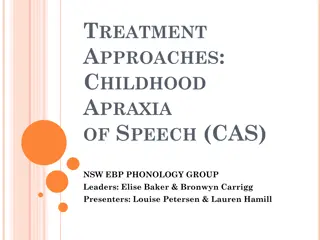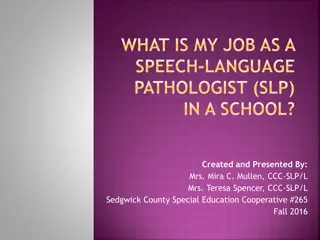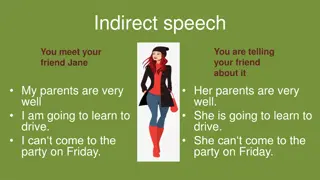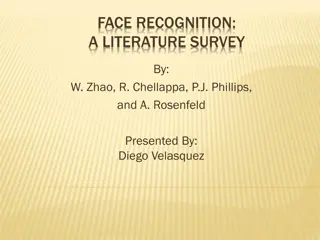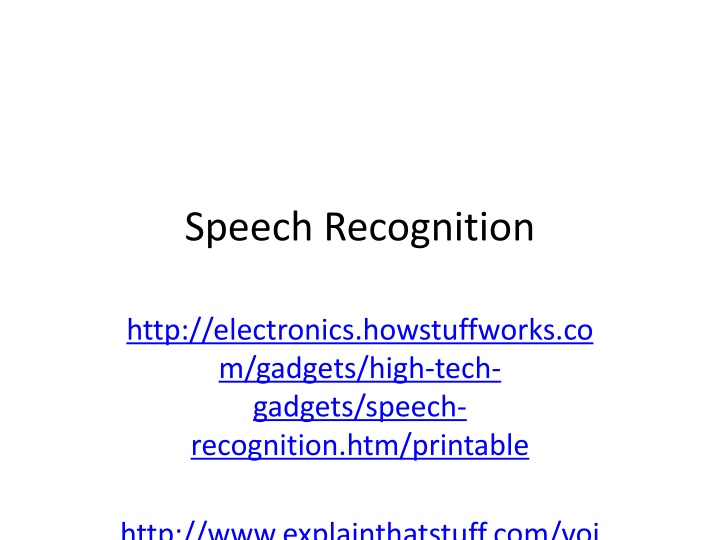
Speech Recognition: Types, Conversion Process & Models
Explore the world of speech recognition from sampled and synthesized sound types to the analog-to-digital conversion process. Learn how people pause airflow for consonants, and discover Hidden Markov Models. Explore examples and methods to convert spoken sounds to written words using different techniques like pattern matching and neural networks.
Download Presentation

Please find below an Image/Link to download the presentation.
The content on the website is provided AS IS for your information and personal use only. It may not be sold, licensed, or shared on other websites without obtaining consent from the author. If you encounter any issues during the download, it is possible that the publisher has removed the file from their server.
You are allowed to download the files provided on this website for personal or commercial use, subject to the condition that they are used lawfully. All files are the property of their respective owners.
The content on the website is provided AS IS for your information and personal use only. It may not be sold, licensed, or shared on other websites without obtaining consent from the author.
E N D
Presentation Transcript
Speech Recognition http://electronics.howstuffworks.co m/gadgets/high-tech- gadgets/speech- recognition.htm/printable http://www.explainthatstuff.com/voi
Types of Audio Two major types of digital sound: Sampled sound: digital recording of previously existing analog sound wave. File contains numeric values to describe the amplitude of the sound wave at a particular instant. Used to capture and edit naturally-occurring sounds. Synthesized sound: new sound generated by the computer. File contains instructions the computer uses to reproduce the sound. Used to: Create original compositions Produce novel sound effects.
Speech to Data analog-to-digital converter (ADC) translates an analog wave from your microphone into digital data that the computer can understand. It samples (digitizes) the sound by taking precise measurements of the wave at the recording sample frequency.
People pause their airflow when saying certain consonants like "p" or "t." The program then matches these segments to known phonemes in the appropriate language. A phoneme is the smallest element of a language -- a representation of the sounds we make and put together to form meaningful expressions. There are roughly 40 phonemes in the English language.
Hidden Markov Model 1. Has finite internal states that generate a set of external events (observations) 2. The internal state changes are invisible (hidden) to a viewer outside the system 3.The current state is always dependent on the immediate previous state only (Markov process) http://setosa.io/ev/markov-chains/
Interesting Examples http://cecas.clemson.edu/~ahoover/ece854/r efs/Ramos-Intro-HMM.pdf
How to turn spoken sounds into written words Simple pattern matching (where each spoken word is recognized) Pattern and feature analysis (where each word is broken into bits and recognized from key features, such as the vowels it contains) Language modeling and statistical analysis (in which a knowledge of grammar and the probability of certain words or sounds following on from one another is used to speed up recognition and improve accuracy) Artificial neural networks (brain-like computer models that can reliably recognize patterns, such as word sounds, after exhaustive training).
Issues Homonyms Background noise Syntax (the grammatical structure of language) Semantics (the meaning of words)
Applications In-car systems Apple CarPlay Android Audio People with disabilities What others can you think of?
Amazon Alexa https://hackernoon.com/alexa-skills-and- intents-be8886645ff https://www.pluralsight.com/guides/node- js/amazon-alexa-skill-tutorial https://blog.kit.com/build-an-alexa-bot- e1342bff0465 https://developer.amazon.com/public/solutio ns/alexa/alexa-skills-kit/docs/supported- phrases-to-begin-a-conversation
Google Home https://www.programmableweb.com/news/h ow-to-get-started-google-actions/how- to/2017/01/31 https://docs.api.ai/docs/guidelines-slot- filling#section-managing-yes-no-unknown- answers-with-contexts

![Prevention and Combating of Hate Crimes and Hate Speech Bill [B.9B.2018]](/thumb/60513/prevention-and-combating-of-hate-crimes-and-hate-speech-bill-b-9b-2018.jpg)
